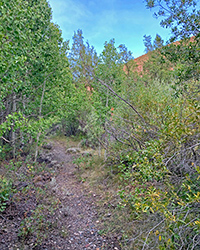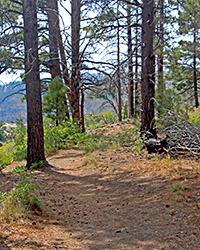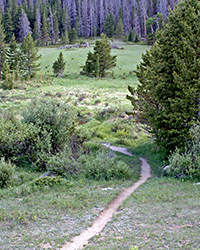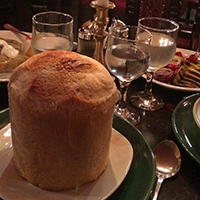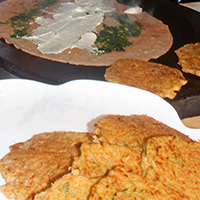OBJECTIVES By the end of this session you will be able to:
|
Tasks for this session
Before the start of our fourteenth class meeting:
Read
Read drafts of the Grand Challenges Paper submitted to you by your classmates, and give them feedback on their papers.
Check out the guide to writing such papers.
as PDF, Word, or Pages.
Check out the examples of some good papers.
as Word or Pages.
Use or consult the template for writing
the papers and for your learning journal.
As Word or Pages.
There are no further reading assignments in this class.
Watch and Listen
There are no assigned videos or podcasts or lectures.
Tasks
Activity One
Attend our class. Our class for the 13th session is on Zoom (or in the classroom if you like; I will be on campus). After class, also participate in the discussion boards.
We will be discussing some ideas about non-profit leadership and management.
We will also discuss some more about advocacy.
I will review some practical approaches to making an assesement of a community or organization.
We will review many of the objectives of the course. I will be asking you to answer questions posed by the objectives. For example, “what are three basic strategies we could use if we wanted to influence our state representatives and state senators to vote in favor of some specific policy?” or “would you personally prefer to work with powerful persons as a friendly sort of activist the way Whitney Young or Dorothy Height did, or are you more interested in confrontational mobilization of people against power, the way Saul Alinksy did, and why do you prefer one or the other?” Or, “what are some habits or exercises you can undertake (or lead others to do) so that people can gather information or conduct self-examination, adn why are those useful things to do in macro practice/”
Activity Two
Read drafts of the Grand Challenges Papers submitted by your classmates. Give feedback to them on their papers. If you give feedback by the end of this session (start of the 14th session) people should have a week or two to edit and revise their papers based on your feedback (during the 14th and 15th sessions). You will have two or three papers to read. Allow about 45 minutes to 1 hour for each paper, and use that time to read, proof-read, and give some constructive feedback (including praising things that are done well, and suggesting things to add or change to improve the final draft).
Guides to writing all your assignments are available in Word format and Pages format.
Activity Three
Continue working on your third experiential learning assignment. Be active in your participation with a group, observe the group, and think about how what we are learning in this class could be applied with the group you are active with, and write in your learning journal about this.
Activity Four
Finish up your fifth experiential learning assignment by writing up your human rights advocacy.
Activity Five
Post a little in the discussion board for this session. As we have class on Zoom, you do not need to put to much time into the discussion boards (if you attended the Zoom class at the 13th session).
In 2021, the writing groups are as follows:
Share a draft of your Grand Challenges Paper with peers in your group by the end of the 12th session, and then in this 13th session you should give feedback and editing suggestions, so that people will be able to revise their papers in the 14th session. Here, as a reminder, is a list of the persons in each peer review group.
Sanguine Group: Paiton Fornoff, Storm Casad, Yolanda Taylor), and Nataly Garcia; pforn2@uis.edu, scasa2@uis.edu, ytayl2@uis.edu, ngarc4@uis.edu.
Copper Group: David Berkley, Kadesia Currie, Lynette Ware, and Sinclaire Baker; dberk4@uis.edu, kcurr6@uis.edu, lware4@uis.edu, sbake6@uis.edu.
Vert Group: Jared Faires, Jenny Sharp, Ricky Brown, and Sundae Johnson; jfair6@uis.edu, jshar4@uis.edu, rbrow26@uis.edu, sjohn96@uis.edu.
Sable Group: Marcey Otto, Jessica Perez, Janet Rodriguez, and Sophia Vosnos; mhods2@uis.edu, jpere79@uis.edu, jrodr207@uis.edu, svosn2@uis.edu.
During Class Session 13, this is what we will do:
1. Check in.
2. Discuss any macro practice that has been in the news.
3. Discuss the experiences Barack Obama had in the Altgeld neighborhood of Chicago.
4. Review some expectations of your papers and your learning journals.
5. Talk about good practices in non-profit and human services administration and management.
6. Talk about advocacy in macro practice.
7. Review objectives of the course to see what we know.
8. We will learn about some ways of doing assessments in communities or organizations.
Session Time Budget
1h 30m |
Canvas Discussion Board participation |
2h |
Meet on Zoom or classroom for our 13th session class meeting. |
2h 30m |
Give feedback to your peers on their Grand Challenges paper, and work on your own paper. |
1h |
Continue your participation in a group or organization so that you can use this participation to inform your thinking with practical applications of what we are learning in this class. You probably should be writing about your experience in your journal by now. This is your Third Experiential Learning Assignment |
1h |
Work on your presentation of your Grand Challenges Paper. |
3h |
Finish up the fifth experiential learning activity, in which you advocate for human rights. Write about it in the learning journal. |
Discussion Board Questions (Activity One)
Go into Canvas, log in, and respond to the discussion questions for this session.
These are:
DQ 13-1: Check In
Check in for the thirteenth week of the semester. Tell us what is going on. Share your answer to this question: “for what in your life do you feel most grateful?”
DQ 13-2: .
Share with the class something you learned from one of your classmate’s papers, or share a good idea you encountered, or share something positive about what you are seeing in your classmate’s work.
DQ 13-3: .
Consider the different ways we can advocate for human rights. We can advocate for the rights of a specific person. We can advocate for our goverment to ratify human rights treaties. We can point out to someone in a policy-making position how a system is not protecting people’s human rights, and needs attention to correct this. We can educate people about human rights. We can learn more about human rights and how to apply a human rights perspective in our social work practice. There are many other things we could do .
Identify a way of doing human rights advoacy that you would most enjoy, and then identify the human rights achievement that would do the most to secure human rights for everyone. These are probably two different things: we are necessarily involved in small steps and actions, but we can have a vision of what really needs to be done and what achievements are necessary to lead our world toward one where everyone enjoys their human rights.
DQ 13-4: Why not a human rights culture?
Many of our macro practice efforts are used to organize people who are not getting their needs met by the current configuration. Why are so many systems generating so many problems? Why do we continue to allow poverty and the resulting deprivation to go on harming so many persons? Consider this passage from the International Federation of Social Workers Statement on Human Rights and Extreme Poverty:
…The aims of all poverty reduction programs ought to be the creation of a human rights culture, which we see as a “lived awareness” of human rights principles that ultimately mirror human needs. Such awareness ought to exist not only in a cognitive sense, that is, one’s mind, but also in literally a “heartfelt” sense where such principles are lived and dragged into one’s everyday life. Research repeatedly asserts that only chosen values endure. One cannot force such a culture on anyone. It must make sense to the entire global community and be chosen on its own merits….
What, in your estimation, prevents Americans from accepting such a human rights culture? Why does our culture not appreciate the dignity of every person, and why do we not organize our culture and society so that people’s cognitive, physical, spiritual, social, and self-actualization needs are central to our thinking and framing of issues? Is it really just a matter of ideology?
DQ 13-5: Raising Money
Michael Jacoby Brown suggested that groups ought to raise money from members, and only count on the money they could raise through dues-paying members, because organizations generally do whatever the people who fund the organizations want them to do. He also pointed out that foundations tend to only fund groups for a few years, and then move on to other things as foundation leadership follows the next fad.
But, in actual practice, many organizations rely on regular charitable contributions from sources outside their membership. For example, you may listen to NPR or watch PBS, and you know that members contribute a significant amount of their operating money, but you may also know that large corporations and charitable foundations also donate money to produce programming and support local stations. Likewise, non-profit agencies that deliver services usually get paid fees for their services, or they win contracts to provide those services. They also appeal to the public (and especially prominent and wealthy members of the public) to develop a relationship with their agency and support the work they do. Some services agencies are supported by regular donations and bequests to religious groups, who then support the charitable services affiliated with their religion. Others are affiliated with the United Way or other umbrella groups, and most large employers support employee contributions directly out of paychecks to those groups. For example, in Illinois, the State and University Employees Combined Appeal gives every state worker and public university employee an opportunity to choose from a long list (hundreds of charitable groups) and have money go directly to the groups before it even gets into the employees’ paychecks. You can see where your instructor sent his direct contributions through the SECA campaign in calendar year 2022 here.
For this discussion question, reflect on what you learned from your second experiential learning assignment (what did the most influential and powerful persons you know tell you about how they decided whom to support?) and think about your own charitable giving or solicitations for donations you have received (pledge drives, fundraisers, etc.). From what you know in your own experiences and what you have learned through your social work education (including this class), what are some of the foundational rules for fundraising? If you had to come up with a list of the top three, or top five, or top ten rules for getting resources and support to keep a non-profit group going, what rules would you come up with?
DQ 13-6: Imagine writing a 1-page proposal
Look up some charitable foundations you might find the internet. These are often set up by billionaires or multi-millionaires to distribute money to people who are doing things that the wealthy family wants done in the world. Sometimes they are set up by persons or families of more limited means (they may only have a few million dollars), and so a local charitable trust with a couple hundred thousand dollars may distribute ten thousand or twenty thousand dollars each year in the local area, giving money to more modest efforts. You could look at some of the large funders like the Bill and Melissa Gates Foundation, the Novo Nordisk Foundation, the Ford Foundation, the Open Society Foundation, or the Lilly Endowment. You could look up some of the more social-work oriented foundations, such as the Doris Duke Foundation, the Annie Casey Foundation, the Field Foundation, The Funders Together to End Homelessness, and the Melville Charitable Trust. Almost al these foundations, when they want to support something, in the first wave of reviewing proposals, want 1-page proposals. Then, they look over all the single page proposals, and choose a pool of those, and come back to the agencies that sent those in to ask for more time and effort. The funders recognize that it takes a lot of time and effort to make a detailed proposal, and they don’t want agencies to waste time and resources preparing such a complete proposal unless the funders are seriously interested, so they generally only accept one-page proposals in the first wave.
Public grants are also a thing. Various federal agencies put out requests for proposals, and states or government entities or private corporations or charitable non-profit agencies apply for the grants. Some grants are given as community development block grants to states, who then distribute the money to county boards and cities, who then award money to local agencies in their area. Making a request for these community development block grants also often starts with creating a one-page summary of what you intend to do, and giving a short five-minute or three-minute presentation to the county board or city council.
Imagine an agency or group that is delivering services. Perhaps this could be the group you have been working with this semester. Imagine that your group wants to get funding for a few years to do some special project or initiative. What sort of things would you put into a one-page proposal if you were seeking interest from one of the foundations or charitable trusts?
DQ 13-7: Advocacy and Organizing
Consider the social work activities of advocacy and organizing. These are two of the macro practice approaches we have covered in this class. You have read a lot about organizing, and encountered some ideas about advocacy. Your experiential learning assignments and the grand challenges paper have also given you some deeper appreciation (I hope) for the skills and tactics that help social workers advocate or organize. As we approach the end of the semester, let’s review, and consider some of the techniques that work. Share and explain at least one technique of organizing (it could be a thing people do, a strategy, a tactic, an action, a process, a principle, and so froth). Share also one technique of advocacy, and explain it.
DQ 13-8: Enhancing or Diminishing Qualty of Life
The term “public policy processes” could mean the process of policy practice. Those are the things that go into making a law or making a rule, or ending laws and rules, or modifying them. Public policy processes could also refer to all the laws and rules and systems that are set up by governments to do whatever it is that the public wants them to do (promote the general welfare, provide for the common defense, establish domestic tranquility, etc.). So, for example, the public human services and social services and social welfare programs are public policy processes.
Whichever way we are conceiving of “public policy processes” we still face the fact that these processes reflect attitudes and values of our society, and therefore some persons are more highly valued, and other persons are more likely to be despised, with their opinions held in contempt.
Explain one thing going on in public policy processes that diminishes the quality of life for some group of persons, and then explain something in public policy processes that enhances the quality of life for some group of persons. Are the enhancement and diminishment intentionally sought by the public policy process? Are the results tolerated, accepted, praised, lamented, or even recognized? What attitudes and values are encouraging or allowing the public policy processes to continue in their current form?
DQ 13-9: Your social work top-ten list
Share with us your top-ten list of the most significant problems that the social work profession faces. These could be issues within the profession or social problems that our profession is trying to address. You might look at your instructor’s blog post about the issues that most concern him to see how to make a list about social problems. But, I’m not asking you to share a list of your top general concerns about problems in the world (as I was doing when I made that list); rather, I’m asking you to share your perceptions of the biggest challenges facing social work as a profession (so, among general problems in the world, the ones that social work might try to address could be on the list, but there might also be issues within the profession or academic field you feel reach a level of significance where they would be on the list as well).
By “top ten” or “biggest” I do not mean to distinguish between “difficult” or “popular and widely recognized” or “of greatest significance” or “with the highest potential for achieving the goals of the profession”. All of those concepts merge in unique ways for each of us when think of “biggest” things or “top” things that should concern our profession.
Interesting Stuff To Explore (optional stuff)
- Melville Charitable Trust
- Field Foundation of Illinois
- Still We Rise Fund
- Ford Foundation
- Annie E. Casey Foundation
- Common Counsel Foundation
- Trans Justice Funding Project
- Bill and Melinda Gates Foundation
- Open Society Foundations
- Grassroots International
- Global GreenGrants Fund
- Novo Nordisk Foundation
- Doris Duke Foundation
- Thousand Currents
- The Lilly Endowment
- Third Wave Fund
- Proteus Fund
- Funders Together to End Homelessness
Articles and websites:
Phlanthropy Serves the Status Quo
Candid (scroll down to the news articles about philanthropy)
Association of Fundraising Professionals
Come to the next class ready.
Our 14th class is scheduled for November 23rd. This is Thanksgiving week, so I think for the fourteenth class we will just meet in the Canvas discussion board without any Zoom class or meeting on campus. You must present your Grand Challenges paper (an oral presentation of 5-10 minutes) in that final class Zoom meeting we have on November 30th.










